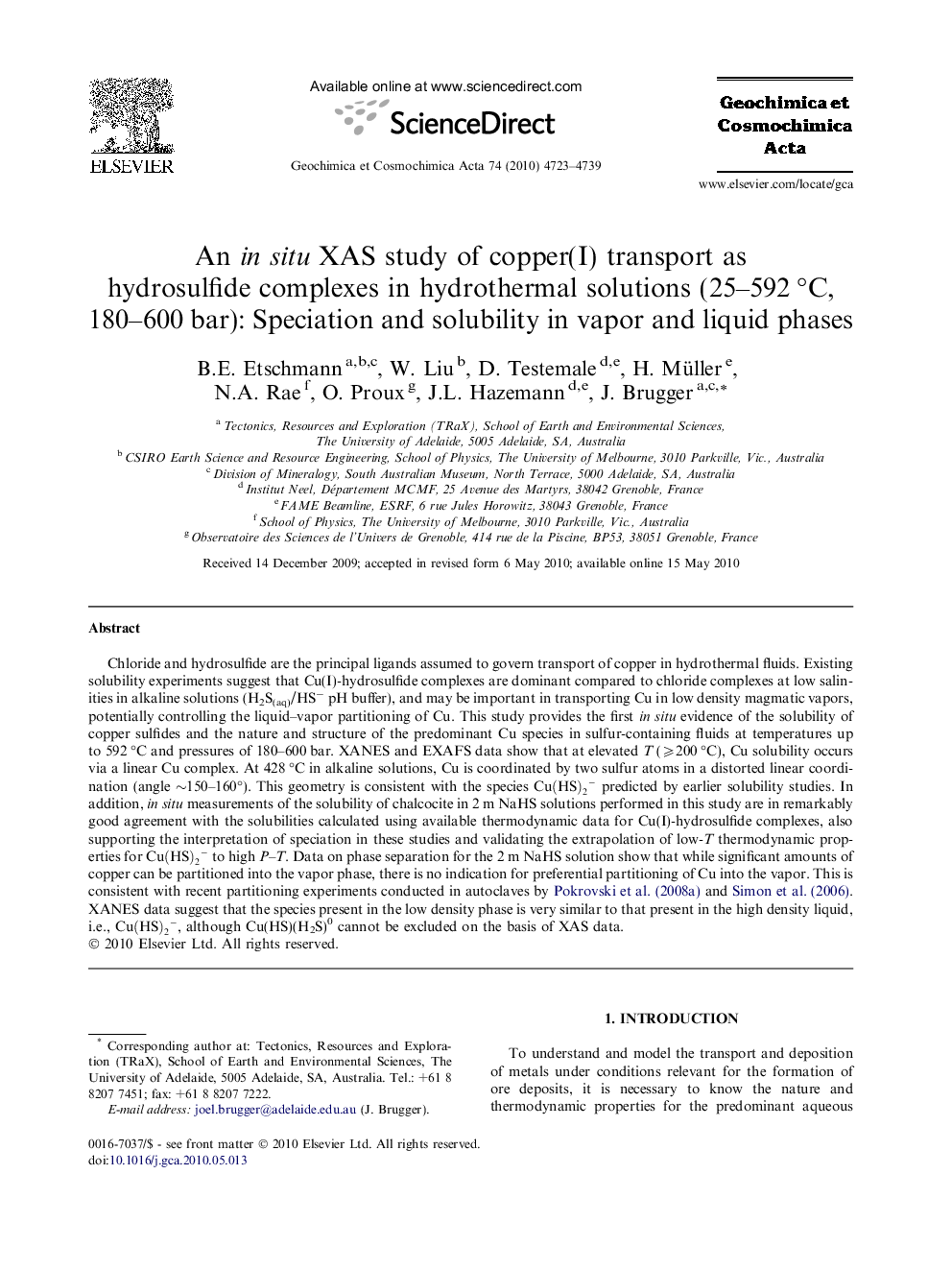| کد مقاله | کد نشریه | سال انتشار | مقاله انگلیسی | نسخه تمام متن |
|---|---|---|---|---|
| 4703891 | 1352885 | 2010 | 17 صفحه PDF | دانلود رایگان |

Chloride and hydrosulfide are the principal ligands assumed to govern transport of copper in hydrothermal fluids. Existing solubility experiments suggest that Cu(I)-hydrosulfide complexes are dominant compared to chloride complexes at low salinities in alkaline solutions (H2S(aq)/HS− pH buffer), and may be important in transporting Cu in low density magmatic vapors, potentially controlling the liquid–vapor partitioning of Cu. This study provides the first in situ evidence of the solubility of copper sulfides and the nature and structure of the predominant Cu species in sulfur-containing fluids at temperatures up to 592 °C and pressures of 180–600 bar. XANES and EXAFS data show that at elevated T (⩾200 °C), Cu solubility occurs via a linear Cu complex. At 428 °C in alkaline solutions, Cu is coordinated by two sulfur atoms in a distorted linear coordination (angle ∼150–160°). This geometry is consistent with the species Cu(HS)2- predicted by earlier solubility studies. In addition, in situ measurements of the solubility of chalcocite in 2 m NaHS solutions performed in this study are in remarkably good agreement with the solubilities calculated using available thermodynamic data for Cu(I)-hydrosulfide complexes, also supporting the interpretation of speciation in these studies and validating the extrapolation of low-T thermodynamic properties for Cu(HS)2- to high P–T. Data on phase separation for the 2 m NaHS solution show that while significant amounts of copper can be partitioned into the vapor phase, there is no indication for preferential partitioning of Cu into the vapor. This is consistent with recent partitioning experiments conducted in autoclaves by Pokrovski et al. (2008a) and Simon et al. (2006). XANES data suggest that the species present in the low density phase is very similar to that present in the high density liquid, i.e., Cu(HS)2-, although Cu(HS)(H2S)0 cannot be excluded on the basis of XAS data.
Journal: Geochimica et Cosmochimica Acta - Volume 74, Issue 16, 15 August 2010, Pages 4723–4739